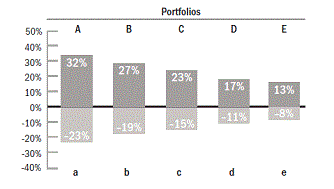|
|
|
| |
Potential Best Case Result ($) |
Probable Result ($) |
Potential Worst Case Result ($) |
|
|
113,159 |
104,073 |
92,453 |
|
|
117,430 |
104,712 |
89,037 |
|
|
122,899 |
105,252 |
84,529 |
|
|
127,422 |
105,614 |
80,983 |
|
|
132,051 |
105,889 |
77,483 |
|
|
|
Example:
- $10,000 initial investment would now be worth $8,000.
- $100,000 initial investment would now be worth $80,000.
Assuming you still have 10 years until you begin withdrawals, how would you react?
|
|
| |
|

|
|
|